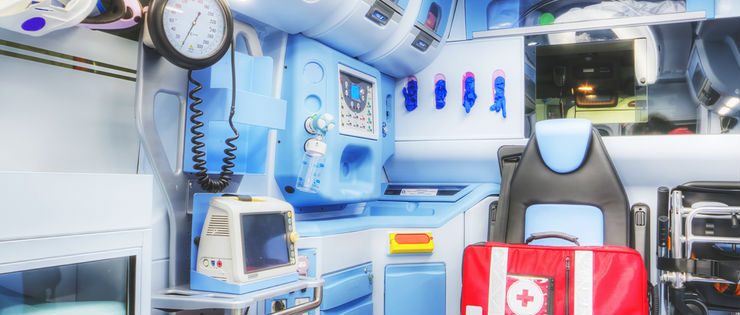
Each state in Australia has a separate ambulance service, so there is some variation in the types of ambulances available around the country. All states have ambulances available to provide emergency response, pre-hospital patient care, specialised transport, and patient transfer.
Paramedics
Most ambulances are staff by two paramedics who carry out a range of treatments for patients such as manual defibrillation, airway management, administering intravenous drugs, etc. Critical or acute care paramedics are usually long-serving paramedics with a higher clinical skill set who are authorised to provide more complex clinical decisions.
The Critical or Intensive Care paramedics can work as pairs or as single operators performing life-saving procedures at the scene which were once only completed in hospitals.
Paid ambulance officers and paramedics work in capital cities and regional areas while some rural areas in Australia rely on casual and volunteer ambulance officers.
Some paramedics are trained to work as wilderness response paramedics accompanying police and SES agencies in remote locations. Aquatic paramedics are trained to assist patients on boats, in waterways, rivers and oceans.
Modes of Ambulance Transport
Across Australia, there is a variety of vehicles used by ambulance services for emergency response, treatment, transport and transfer of patients. The chosen transport depends on the condition of the patient, the treating paramedic, distance to destination and terrain.
Standard Ambulances
Most ambulances in Australia are Mercedes Sprints as the vehicle can accommodate the length and weight of the stretcher with enough room left for the equipment.
Non-Standard Ambulances
Critical care paramedics and commanders will often drive SUV vehicles which do not have a stretcher on board but instead carry more advanced equipment. These vehicles can get to a scene quickly to start treatment while a standard ambulance transports the patient. Some states use motorbikes as rapid response vehicles to get paramedics to a location in heavy traffic. Pushbikes have also been used by paramedics to respond to incidents at public events where there are large crowds.
In rural areas of Australia, a Mercedes Sprinter isn’t suitable for the off-road conditions, so 4x4 vehicles are needed. The outback also relies on fixed-wing aircraft for transporting sick and injured patients to major regional or city hospitals. Aircraft is also used to transfer rural residents when they need to attend hospital on a regular basis for ongoing cancer treatment for example. Helicopters can also be used for patient transfer to hospital and inter-hospital transfers.
Larger vehicles are now available in most states to transfer obese patients or patients being transferred between hospitals with specialised equipment that will not fit in a standard ambulance.
Some ambulance vehicles are fitted out as first aid posts and attend events rather than patient transfer.
Ski areas use all-terrain vehicles, snow mobiles and quad bikes.
Other transfer vehicles are designed to carry wheelchairs and multiple patients.
HIF Ambulance Cover Health Insurance
Some health insurance companies in Australia charge an additional fee for ambulance cover. At HIF we believe ambulance cover should be included in your policy. So if you take out Saver Options, Special Options, Super Options or Premium Options Extra Cover, you’ll be covered for an unlimited urgent ambulance at no extra cost, and non-urgent ambulance for a small $50 co-payment.
Please note:
Benefits are not payable for inter-hospital transportation except for inter-hospital transfers relating to an emergency or new illness where approved on a case by case basis by HIF.
Benefits are not payable for transportation from a hospital to your home, nursing home or another hospital, or for transportation for ongoing medical treatment.
Benefits are not payable for off road or air ambulance.